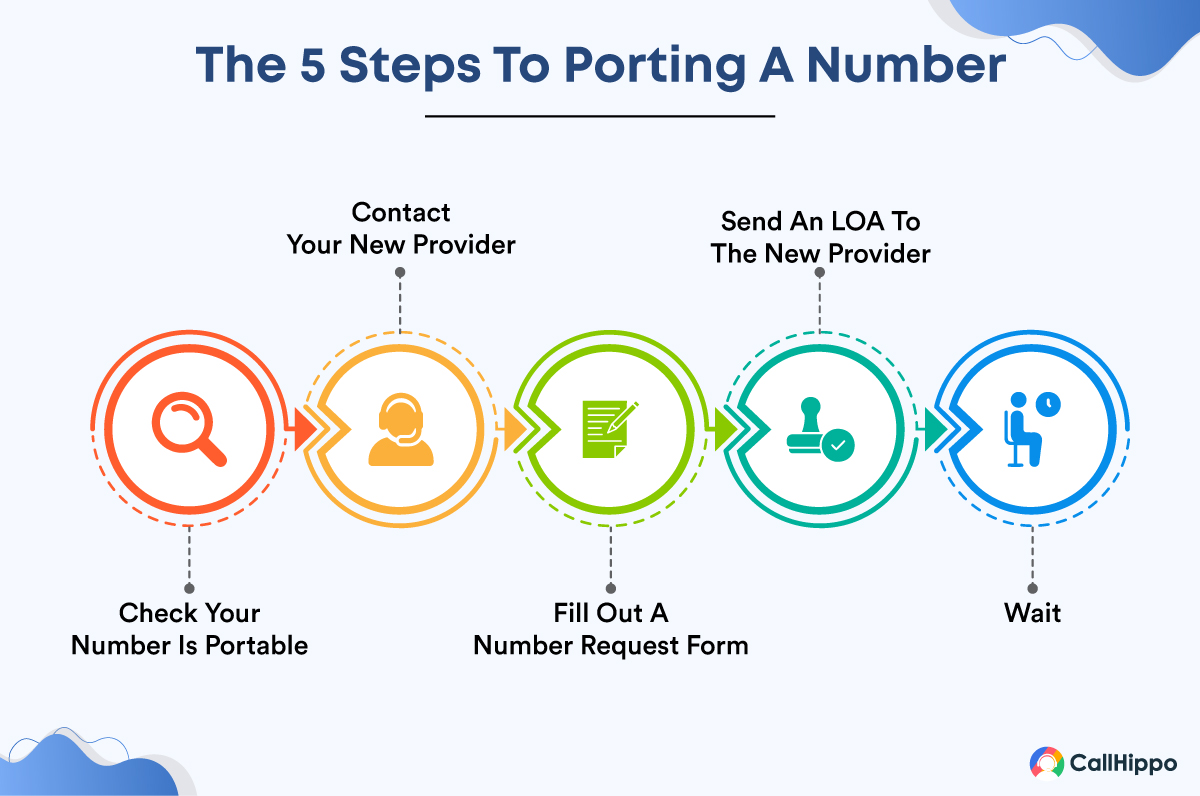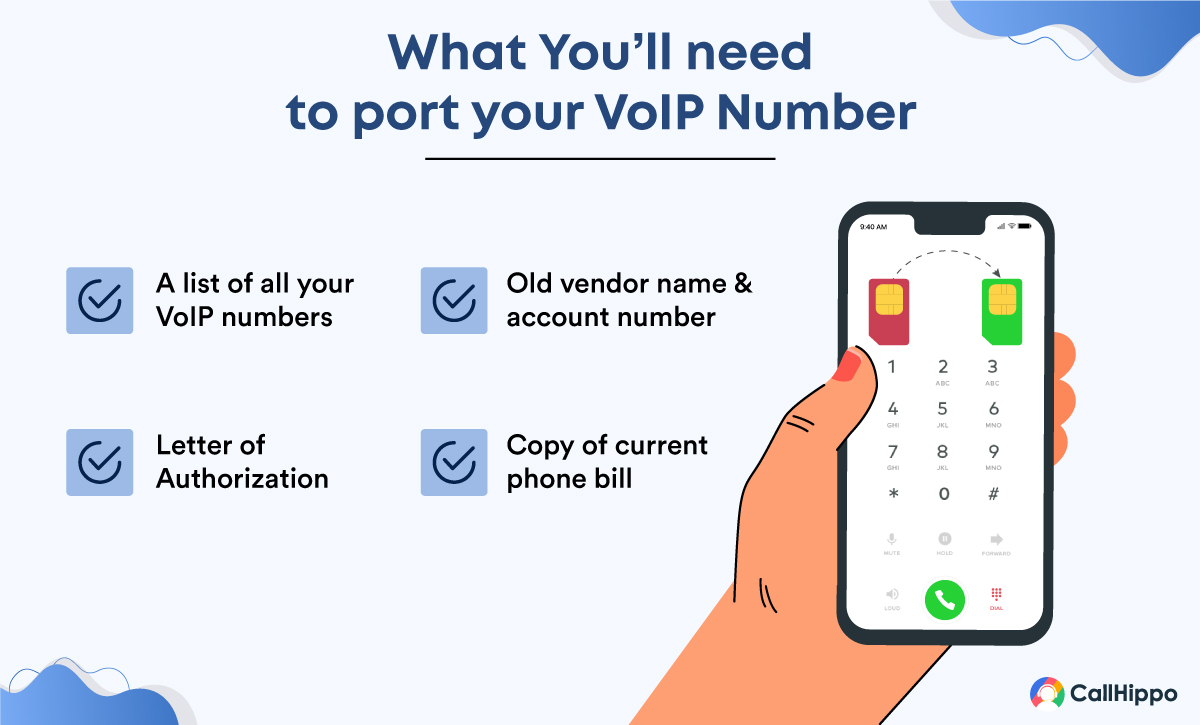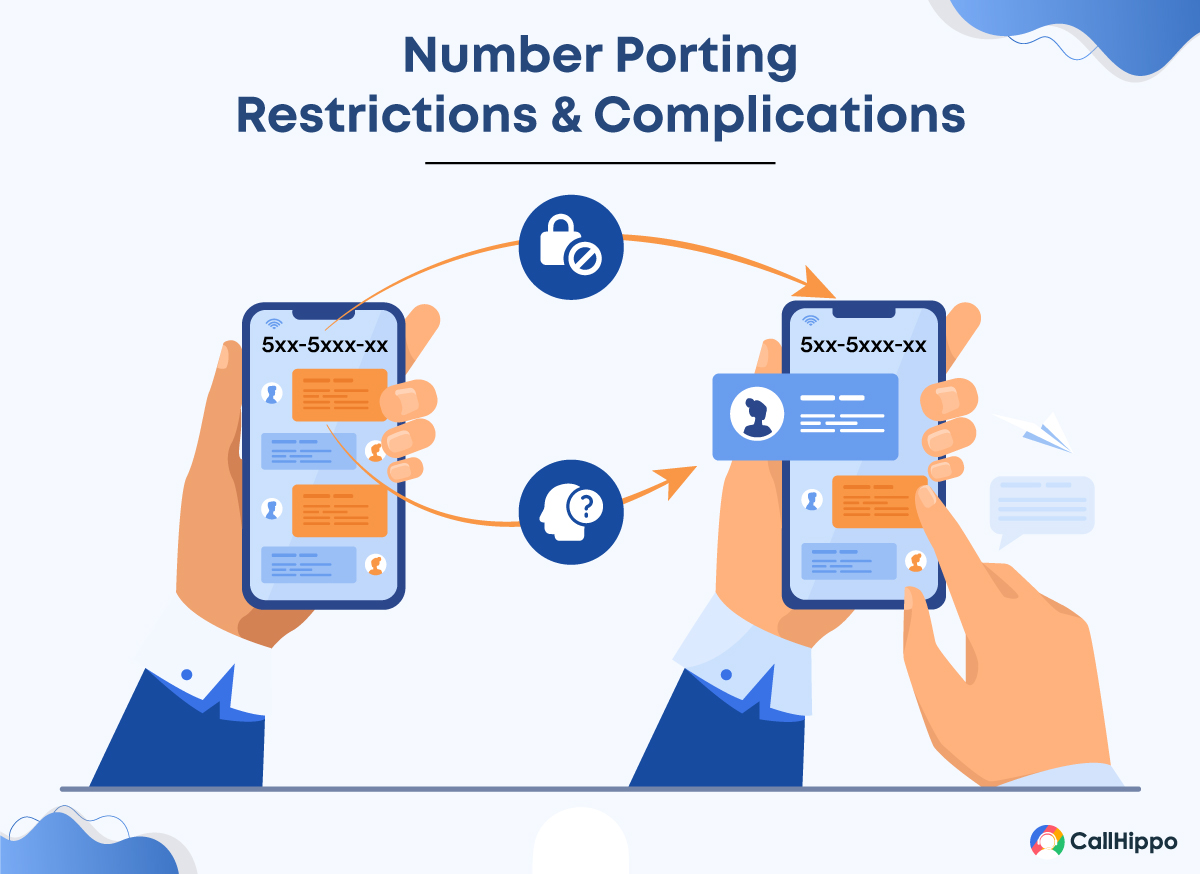When it comes to great customer service, as simple as making sure you still have the same phone number is key. But what if your business is currently moving to a new location, or you don’t want to continue using a specific phone service provider and want to switch to a new one?
This is where VoIP number porting comes in handy, making sure you’re keeping your old number within your new phone service that can ensure your business continuity and longevity.
Now, the question that’s on everyone’s lips is: what is VoIP port number, and how does it even work?
What is VoIP Number Porting?
In short, VoIP number porting is the ability to transfer or “port” your existing phone number to a new VoIP service provider. That means if you’re moving your business to a new office, you can keep your old phone number and have it work with your new VoIP service.
Or, if you’re not happy with your current VoIP provider, you can port your number over to a new service without having to change your phone number and lose valuable customers in the process.
The FCC requires that phone numbers should be portable, so you’re free to take your number with you regardless of the service you use. A rate center determines the geographic area in which your phone number is assigned, and as long as you’re porting to a provider within the same rate center, you shouldn’t have any problems.
How Does VoIP Number Porting Work?
The process of VoIP number port is actually pretty simple.
Tons of videos or YouTube channels can give you step-by-step guides for VoIP implementations. But, we’ll make it brief.
First, you’ll need to request a Letter of Authorization (LOA) from your new VoIP provider. They’ll need some information from you, including your account number and the name of your current provider, as well as your authorization to port the number. This is a simple form that authorizes the new provider to initiate the porting process on your behalf.
Once the LOA is received, the new provider will then contact your current phone service provider and begin the porting process.
Once the porting process is complete, your phone number will be transferred to your new VoIP service, and you can begin using it right away.

Things to Keep in Mind When You Port Number to VoIP:
1. No past-due bills with the previous phone service provider
You must be a customer in good standing with your current phone service provider. That means you can’t have any outstanding balances or past-due bills. You’ll also need to have all the equipment needed to port the number, such as a VoIP adapter.
2. Use the current phone service for at least 60 days
You’ll need to have your current phone service for at least 60 days before you can port your number. This is to prevent fraud and ensure that you’re not porting your number for the sole purpose of avoiding paying your bill.
3. Ensure the compatibility
You’ll need to make sure that your new VoIP service is compatible with your current phone number. That means they must be able to support the type of phone number you have, such as a local or toll-free number.
4. Cancel your service with your old provider
One thing to keep in mind is that you’ll need to cancel your service with your old provider once the porting process is complete. Otherwise, you’ll be charged for two separate phone services.
You May Also Read : Everything You Need To Know About VoIP Phone System
Requirements to Port Mobile Number to VoIP
Before you can port VoIP phone number, you’ll need to have the following information:

1. A list of all your VoIP numbers
It includes all extensions that may be in use, such as hunt groups or call queues, as well as any vanity numbers.
2. Letter of Authorization
In order to initiate the porting process, you’ll need to provide your new VoIP service provider with a Letter of Authorization. This authorizes them to initiate the porting process on your behalf. It provides important information about who can make decisions on the number(s) in question.
3. Account number
You’ll need to provide your VoIP provider with your current account number. This is typically a 10-digit number, and you can find it on your monthly statement from your current phone service provider.
4. A copy of the current phone bill
You will need to provide a copy of your current phone bill so the new VoIP provider can verify your account information. It also acts as additional proof of phone number ownership.
You May Also Read : What is VoIP Phone and How Does it Work?
How Long Does It Take for a VoIP Service Provider to Port Number to VoIP?
The process of number porting varies by provider, and some companies make it simpler than others. That all said, the porting process ideally takes around 2–4 weeks to complete. However, it can sometimes take longer, depending on the phone service providers involved.
Until your number is ported to the new VoIP service, you should continue to be able to make calls. Your phone provider will provide instructions on what to do next and when your number will be transferred.
Also, when porting your toll-free number, you should allow for a longer wait time in order to ensure that your customers don’t experience any interruptions. You also need to make sure that their calls are routed properly and that there are no dropped calls.
Number Porting Restrictions and Complications

It’s crucial to understand the guidelines for porting a phone number to VoIP so that the process goes smoothly. We’ve listed the VoIP number porting restrictions and complications below:
1. Not all phone numbers can be ported
First of all, understand that not all phone numbers can be ported. Here are some types of phone numbers that can’t be ported:
Operator Assisted Calls
Operator Assisted Calls (OAC) are any toll calls that are placed through an operator, such as a 900 number or a 0+ international call.
OACs are not able to be ported since the call is not considered to be originated from your phone. This is because the call is actually being made from the operator’s phone, not yours.
Line Reassignment
Line reassignment is when a customer requests to port their phone number, but their current phone line is actually being reassigned to a new customer.
Line reassignment is not able to be processed since it would result in the new customer receiving the ported phone number, not the original customer.
Vanity Numbers
Vanity phone numbers are phone numbers that spell out a word or phrase, such as 1-800-FLOWERS. It can’t be ported since they are not considered to be a standard phone number.
2. You can’t port a phone number from one country to another
If you’re moving your business to a new country, you’ll need to get a new phone number. The reason for this is quite simple: use phone numbers that are specific to a country and can’t be ported to another country.
3. Geographic Restrictions
When it comes to porting a phone number, there are some geographic restrictions to keep in mind. For example, you can’t port a phone number from one rate center to another.
Rate centers are geographic areas in which phone numbers are assigned. So, if you’re moving your business to a new office in a different rate center, you’ll need to get a new phone number.
The good news is that most VoIP providers offer local or toll-free numbers, so you can choose a number that’s specific to your new location.
4. Phone service outages
One complication you may run into when porting your phone number is a service outage. This can happen if your current phone service provider experiences a problem with their network or if there’s an issue with the porting process.
If this happens, your phone service may be interrupted during the porting process. In most cases, your service will be back up and running within a few hours. However, it’s always a good idea to have a backup plan in place, just in case.
You May Also Read : VoIP Problems And How To Fix Them Now
Errors that May Occur When Porting Your VoIP Number
Porting a VoIP number isn’t plain sailing most of the time, but as long as you’re aware of the potential complications, you can be sure that the process will go smoothly. There are a few errors that may occur during the porting process, which can cause delays. Here are some of the most common errors:
1. The phone line is DSL
DSL (Digital Subscriber Line) is a type of phone line that uses a copper wire instead of a fiber optic cable.
DSL is not able to be ported since it’s not considered to be a VoIP line. In order to port your number, you’ll need to cancel your DSL service and get a new VoIP line.
2. Incorrect account number
One of the most common errors is an incorrect account number. This can happen if you provide your new VoIP provider with the wrong account number.
To avoid this, double-check the account number before you provide it to your new VoIP provider. You can find it on your monthly statement from your current phone service provider.
3. Incorrect billing address
Another common error is an incorrect billing address. This can happen if you move to a new office and forget to update your billing address with your new VoIP provider.
To avoid this, make sure you update your billing address with your new VoIP provider before you request to port your phone number.
4. Incomplete rate center
If you’re porting your phone number to a new VoIP provider in a different rate center, you’ll need to provide your new VoIP provider with the correct rate center information.
If you don’t, the porting process will be delayed. To avoid this, make sure you have the correct rate center information before you request to port your phone number.
5. Toll-free 800 number redirect
If you’re porting a toll-free 800 number, you’ll need to make sure that it’s redirected to your new VoIP service. If it’s not, the porting process will be delayed. To avoid this, make sure you redirect your toll-free 800 number to your new VoIP service before you request to port your phone number.
How to Avoid VoIP Number Porting Issues
Although the VoIP number porting process is pretty straightforward, there are a few things that can go wrong. To avoid any issues, here are a few tips:
1. Plan ahead
The best way to avoid any issues is to plan ahead. Start by doing your research and choose a VoIP provider that you’re confident will be able to meet your needs.
Once you’ve chosen a provider, sign up for their service and get everything set up before you cancel your service with your old provider. This way, you can be sure that everything will be up and running smoothly when your number is ported.
2. Keep your current phone service active
Until your number is ported to your new VoIP service, you should keep your current phone service active. This way, you can be sure that you won’t miss any calls while the porting process occurs.
3. Have a backup plan
Although the porting process is usually pretty smooth, there’s always a chance that something could go wrong. To be safe, it’s a good idea to have a backup plan in place.
For example, you could forward your calls to your cell phone or to a colleague’s phone. That way, you can be sure that you won’t miss any important calls.
4. Follow the instructions
When you’re porting your phone number, be sure to follow the instructions from your VoIP provider. They’ll be able to guide you through the process and make sure that everything goes smoothly.
FAQs
1. Can you port a virtual number?
Yes, you can port a virtual number to a new VoIP provider. However, keep in mind that not all phone numbers can be ported. For example, you can’t port landline to voip, or a VoIP number to a landline. The type of phone number you have matters when it comes to porting.
2. How do I port landline to VoIP?
Porting your landline phone number to VoIP is possible with nearly all US-based numbers. To port a telephone number to a VoIP phone system, you will need to contact your original phone provider and request to transfer the number to your new VoIP provider.
3. Can I port my Google Voice number to VoIP?
Yes, you can port your Google Voice number to a VoIP provider. You will need to first port your VoIP number to a mobile carrier (AT&T or Verizon) to make it eligible to be ported into Google Voice. The one-time porting fee to Google Voice is $20.
4. How do you check if my number can be ported?
The best and the most straightforward way to check if your phone number can be ported is to contact your current phone service provider and ask. They will be able to tell you if your number is eligible for porting.
5. Can I port a VoIP number to a cell phone?
No, you can’t port a VoIP number to a cell phone. Since a cell phone number is not considered to be a landline number, it’s not eligible for porting.

Subscribe to our newsletter & never miss our latest news and promotions.









